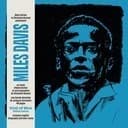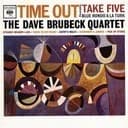Formula, Intervals, and the Chromatic Passing Tone
The D bebop dominant scale follows the interval formula of 2-2-1-2-2-1-1-1 semitones, producing the intervallic structure: root (1), major second (2), major third (3), perfect fourth (4), perfect fifth (5), major sixth (6), minor seventh (♭7), and major seventh (7). The notes D, E, F#, G, A, B, C, and C# create a scale where the chromatic passing tone (C#) bridges the gap between the characteristic dominant flat seventh (C natural) and the octave, solving the rhythmic challenge that bebop pioneers encountered when playing rapid eighth-note lines over dominant chords.
Application in Modal Jazz and D7 Chord Improvisation
The D bebop dominant scale serves as the primary improvisational tool over D7 (D dominant seventh) chords in jazz contexts, particularly effective in modal jazz compositions. The scale gained prominence through its use in modal tunes where D Mixolydian or D7 harmony is sustained for extended periods, allowing improvisers to explore the bebop dominant sound without rapid chord changes. When soloing over D7 chords in tunes like "So What" (in D Dorian/Mixolydian contexts) or "Impressions," jazz pianists use the D bebop dominant scale to create lines that outline the D-F#-A-C chord structure while incorporating characteristic bebop chromaticism.
Piano Practice Techniques and Rhythmic Development
For effective piano practice of the D bebop dominant scale, begin with consistent fingering patterns. In the right hand ascending from D, use the fingering: 1(D)-2(E)-3(F#)-1(G)-2(A)-3(B)-4(C)-1(C#)-2(D). Practice hands separately first, then hands together in parallel and contrary motion to develop coordination. Set your metronome to a comfortable tempo (60-80 BPM initially) and practice the scale in strict eighth notes, deliberately emphasizing chord tones (D, F#, A, C) on downbeats. Progress to practicing the scale in triplets, sixteenth notes, and various rhythmic groupings, always maintaining awareness of where chord tones fall within each rhythmic pattern.
Common Chord Progressions and Harmonic Applications
The D bebop dominant scale finds frequent application in jazz ii-V-I progressions where D7 functions as the dominant (V) chord. In the key of G major, the progression Am7-D7-Gmaj7 provides the perfect context for employing this scale: play A Dorian over Am7, switch to D bebop dominant over the D7 chord, and resolve to G major tonality. The scale also works beautifully in blues progressions and modal jazz contexts where D7 harmony is featured prominently.
Relationships to Other Scales and Modes
The D bebop dominant scale shares its foundational structure with the D Mixolydian mode, the fifth mode of G major, differing only by the addition of the major seventh (C#) chromatic passing tone. The D bebop major scale serves as the parallel bebop scale, sharing the same root but built on a major scale foundation. Jazz pianists develop fluency with multiple dominant scale options—bebop dominant, Mixolydian, altered, whole tone— learning to choose the appropriate scale based on harmonic context and desired musical effect.





